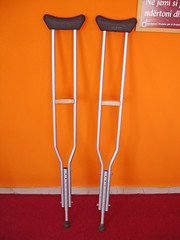Sensory Motor Amnesia
Sensory Motor Amnesia (“SMA”) is a great term coined by Thomas Hanna, the inventor of Somatics.
SMA describes inefficient patterns of muscular activation that are so habitual you can’t sense or control them. For example, you might have simply forgotten how to relax areas such as the neck, low back and shoulders, or how to activate muscles like the glutes or abs. This leads to weakness, inefficiency, poor coordination and eventually pain.
How does SMA develop? The first way is simply lack of movement. Our movement skill, like other skills, will fade if it is not used. Modern life for most people means hours of sitting in chairs, cars or couches, instead of the highly physical environment in which our bodies evolved. Your body was designed by evolution to be constantly squatting, lunging, twisting, turning, reaching, carrying, throwing, fighting, running, climbing on a daily basis. If you stop doing these things for a few years, you will develop some SMA. Over the years your body simply forgets about subtle or gross movement possibilities and falls into a rut from which it cannot escape.
Another common way to develop SMA is with an injury, such as a sprained ankle. A sprained ankle requires the whole body to develop a new movement pattern (e.g. a limp) to prevent movements which will aggravate the injury. Even after the ankle has healed, a subtle form of the limp may persist as a deeply ingrained unconscious compensatory movement pattern throughout numerous joints.
Let's say you have some pain in the shoulder when you push your arm overhead. It's possible that the reason for the pain is that the rotator cuff muscles located along the shoulder blade are not doing their job of pulling down on the top of the humerus and preventing it from sliding into the acromion process directly above it. This causes an impingement of soft tissues between two bones which causes pain. Why aren't the rotator cuff muscles turning on at the right time and doing their job? As we discussed above, one possibility is that the person has simply failed to do any significant work with their arm overhead for a while and the rotator cuff muscles have simply become sloppy and uncoordinated in doing this job at the right time. Another possibility is that a previous shoulder injury from years past required those muscles to rest to avoid further injury, and they got into a bad habit of being lazy that was never corrected after the injury healed.
So how do we cure SMA? By trying a system such as the Feldenkrais Method or Z-Health which is designed take your body goes through all the subtle little movements you have unconsciously avoided for years. It takes precise concentration and attention to recover them without “cheating” or deviating into a compensatory pattern. After the movement is recovered, it is integrated back into your movement patterns, leading to increases in performance and reductions in pain.


![Reblog this post [with Zemanta]](http://img.zemanta.com/reblog_e.png?x-id=10e97000-5091-4991-bffc-8c5a1f52c017)